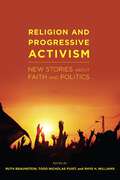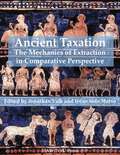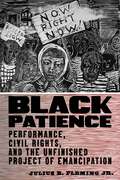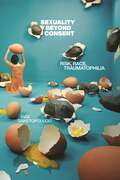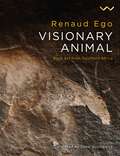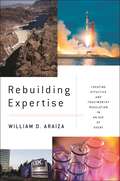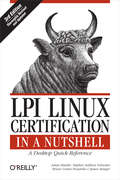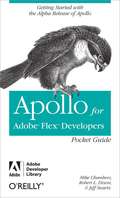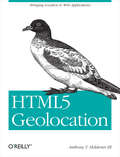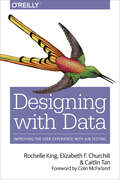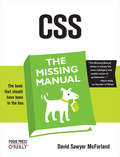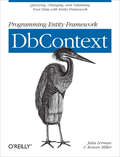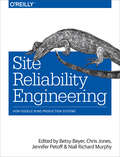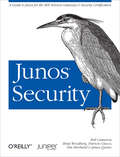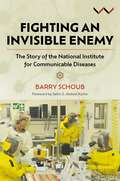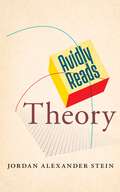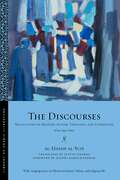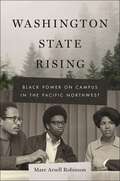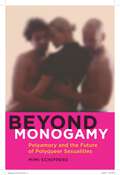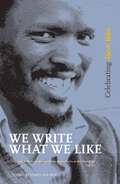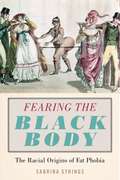- Table View
- List View
Land of Extraction: Property, Fracking, and Settler Colonialism
by Rebecca R. Scott2024 Outstanding Academic Title, given by Choice ReviewsExplores fracking’s dual impact on settler colonial culture and sustainabilityThrough meticulous research and poignant storytelling, Land of Extraction unravels the complex web of relationships between humans, places, and the environment, all bound by the concept of private property. It presents a thought-provoking analysis of how settler colonial culture imposes limits on environmental politics.Drawing on real-life events, fictional portrayals of fossil-fuel driven apocalypses, and firsthand ethnographic accounts of the fracking and pipeline boom in West Virginia, Rebecca R. Scott argues that the American dream’s promise of empowerment through property ownership actually restricts action against extractive industries and hampers the progress of environmental justice coalitions.As the ever-expanding reach of natural gas and pipeline industries takes its toll on communities, the book reveals the fractures in landowners’ reliance on private property, opening the door to more sustainable futures. A powerful call to reevaluate our perspectives and challenge the status quo, this book will leave readers questioning the foundations of our society and the possibilities that lie ahead.
Religion and Progressive Activism: New Stories About Faith and Politics (Religion and Social Transformation #6)
by Edited by Ruth Braunstein, Todd Nicholas Fuist, and Rhys H. WilliamsNew stories about religiously motivated progressive activism challenge common understandings of the American political landscape.To many mainstream-media saturated Americans, the terms “progressive” and “religious” may not seem to go hand-in-hand. As religion is usually tied to conservatism, an important way in which religion and politics intersect is being overlooked. Religion and Progressive Activism focuses on this significant intersection, revealing that progressive religious activists are a driving force in American public life, involved in almost every political issue or area of public concern. This volume brings together leading experts who dissect and analyze the inner worlds and public strategies of progressive religious activists from the local to the transnational level. It provides insight into documented trends, reviews overlooked case studies, and assesses the varied ways in which progressive religion forces us to deconstruct common political binaries such as right/left and progress/tradition. In a coherent and accessible way, this book engages and rethinks long accepted theories of religion, of social movements, and of the role of faith in democratic politics and civic life. Moreover, by challenging common perceptions of religiously motivated activism, it offers a more grounded and nuanced understanding of religion and the American political landscape.
Ancient Taxation: The Mechanics of Extraction in Comparative Perspective (ISAW Monographs #11)
by Jonathan Valk and Irene Soto MarínA collection of studies that explores the extractive systems of eleven ancient states and societies from across the ancient worldAncient Taxation is a collection of studies that explores the extractive systems of eleven ancient states and societies from across the ancient world, ranging from Bronze Age China to Anglo-Saxon Britain. The contributors discuss the inherent challenges of taxation in predominantly agro-pastoral societies, including basic tax strategy (e.g., taxing goods vs. labor, in-kind vs. money taxes, etc.); the mechanics of assessment and collection; and the politics of negotiating the cooperation of social, economic, and political élites and other important social groups. In assembling a broad range of studies, this book sheds new light on the commonalities and differences between ancient taxation systems, and so on the broader fiscal and institutional practices of antiquity. It also provides new impetus for further comparative research into extractive practices across ancient societies and between antiquity and recent historical periods.The book will be of interest to those studying ancient social and economic history, the history of social organization, and the history of ancient Greece and Rome, Egypt, the Ancient Near East, or ancient China.
Black Patience: Performance, Civil Rights, and the Unfinished Project of Emancipation (Performance and American Cultures)
by Julius B. Fleming Jr.Honorable Mention, 2024 Callaway Prize for the Best Book on Drama, Theatre, and Performance Studies (New York University)2024 College Language Association Book Award Winner2023 Hooks National Book Award Winner (Benjamin L. Hooks Institute for Social Change)Honorable Mention, Association for the Study of the Arts of the Present 2023 Book PrizeHonorable Mention, 2023 John W. Frick Book Award (American Theatre and Drama Society)Finalist, 2022 George Freedley Memorial Award of the Theatre Library Association.Finalist, Barnard Hewitt Award for Outstanding Research in Theatre History (ASTR)Finalist, ATHE Outstanding Book AwardA bold rethinking of the Civil Rights Movement through the lens of Black theater“Freedom, Now!” This rallying cry became the most iconic phrase of the Civil Rights Movement, challenging the persistent command that Black people wait—in the holds of slave ships and on auction blocks, in segregated bus stops and schoolyards—for their long-deferred liberation. In Black Patience, Julius B. Fleming Jr. argues that, during the Civil Rights Movement, Black artists and activists used theater to energize this radical refusal to wait. Participating in a vibrant culture of embodied political performance that ranged from marches and sit-ins to jail-ins and speeches, these artists turned to theater to unsettle a violent racial project that Fleming refers to as “Black patience.” Inviting the likes of James Baldwin, Lorraine Hansberry, Alice Childress, Douglas Turner Ward, Duke Ellington, and Oscar Brown Jr. to the stage, Black Patience illuminates how Black artists and activists of the Civil Rights era used theater to expose, critique, and repurpose structures of white supremacy. In this bold rethinking of the Civil Rights Movement, Fleming contends that Black theatrical performance was a vital technology of civil rights activism, and a crucial site of Black artistic and cultural production.
Sexuality Beyond Consent: Risk, Race, Traumatophilia (Sexual Cultures)
by Avgi SaketopoulouRadical alternatives to consent and traumaArguing that we have become culturally obsessed with healing trauma, Sexuality Beyond Consent calls attention to what traumatized subjects do with their pain. The erotics of racism offers a paradigmatic example of how what is proximal to violation may become an unexpected site of flourishing. Central to the transformational possibilities of trauma is a queer form of consent, limit consent, that is not about guarding the self but about risking experience. Saketopoulou thereby shows why sexualities beyond consent may be worth risking-and how risk can solicit the future.Moving between clinical and cultural case studies, Saketopoulou takes up theatrical and cinematic works such as Slave Play and The Night Porter, to chart how trauma and sexuality join forces to surge through the aesthetic domain. Putting the psychoanalytic theory of Jean Laplanche in conversation with queer of color critique, performance studies, and philosophy, Sexuality Beyond Consent proposes that enduring the strange in ourselves, not to master trauma but to rub up against it, can open us up to encounters with opacity. The book concludes by theorizing currents of sadism that, when pursued ethically, can animate unique forms of interpersonal and social care.
Visionary Animal: Rock art from southern Africa
by Renaud EgoAn illustrated collection that takes stock of current knowledge and proposes a new way of reading indigenous artFor thousands of years, nomadic hunter-gatherers assigned a fundamental role to the visualization of the animals who shared their lives. Some, such as the Cape eland, the largest of antelopes, were the object of a fascinated gaze, as though the graceful markings and shapes of their bodies were the key to secret knowledge safeguarded by the animals’ unsettling silence.Renaud Ego posits that the artists sought to steal the animals’ secret through an act of rendering visible a vitality that remained hidden beneath appearances. In this process, the San themselves became the visionary animal who, possessing the gift of making pictures, would acquire far-seeing powers. Thanks to the singular effectiveness of their visual art, they could make intellectual contact with the world in order better to think and,ultimately, to act. They gained access to the full dimension of their human condition through painting scenes that functioned like visual contracts with spiritual and ancestral powers.Their art is an act that seeks to preserve the wholeness of existence through a respect for the relationships linking all beings, both real and imaginary,who partake of it. The fundamentally ecological dimension of this message confers on San art its universality and contemporary relevance.Visionary Animal is a translation of L’Animal voyant, published in France in 2015. This rich collection of essays is beautifully illustrated with the author’s photographs of rock art from across southern Africa.
Rebuilding Expertise: Creating Effective and Trustworthy Regulation in an Age of Doubt
by William D. AraizaWhy the public has lost faith in government and how it can be restored In 1964, over three-quarters of Americans trusted the federal government to do the right thing all or most of the time. By 1980, that number had plummeted to 26 percent, and Ronald Reagan won a sweeping victory for the presidency while proclaiming that government was not the solution to our problems but was itself the problem. Today, Americans’ trust in public institutions is at near historic lows and “bureaucracy” and “big government” are pejorative terms.In Rebuilding Expertise, William D. Araiza investigates the sources of this phenomenon and explains how we might rebuild trust in our public institutions. Written in accessible and engaging language, the author examines the history of this deterioration of trust and reveals how politicians from Clinton to Trump have allowed that deterioration to continue, and, in some cases, actively encouraged it. Using an interdisciplinary approach, with insights from history, political science, law, and public administration, Araiza explores our current bureaucratic malaise and presents a roadmap to finding our way out of it, toward a regime marked by effective, expert regulation that remains democratically accountable and politically legitimate. A timely and indispensable read, Rebuilding Expertise makes clear what steps must be taken to regain public trust in our government.
Food Activism Today: Sustainability, Climate Change, and Social Justice (Social Transformations in American Anthropology #6)
by Dorothy C. Holland Donald M. NoniniIlluminates how food activism has been taking shape and where it is headedAs climate change, childhood obesity, and food insecurity accelerate at an alarming pace, activists around the country are working to address the pressing need for healthy and sustainable solutions to feed the population. Food Activism Today investigates the new approaches food activists are taking as they formulate alternatives to the current unsustainable agro-industrial food system.Drawing on ethnographic research conducted over an eleven-month period in both urban and rural North Carolina, the volume addresses questions about the moral visions of food activists, how class and racial hierarchies infuse some food activism movements, and how food activism relates to climate change and imminent ecological collapse. Exploring food activism around both local and sustainable food production and food security for lower-income people, the volume finds surprisingly little overlap, with the two movements seemingly remaining distinct approaches (at least for now) to issues around the food system, climate change, and access to healthy food choices.As the US moves into an era in which climate change and neoliberal tensions are conjoined in a looming political crisis, Food Activism Today looks at where food activism is headed, the ethics and issues surrounding alternative approaches to food production, and how food production is related to broader issues of climate change.
LPI Linux Certification in a Nutshell: A Desktop Quick Reference (In A Nutshell (o'reilly) Ser.)
by Bruno Gomes Pessanha James Stanger Stephen Addison Schneiter Adam HaederLinux deployment continues to increase, and so does the demand for qualified and certified Linux system administrators. If you're seeking a job-based certification from the Linux Professional Institute (LPI), this updated guide will help you prepare for the technically challenging LPIC Level 1 Exams 101 and 102.The third edition of this book is a meticulously researched reference to these exams, written by trainers who work closely with LPI. You'll find an overview of each exam, a summary of the core skills you need, review questions and exercises, as well as a study guide, a practice test, and hints to help you focus.Major topics include:Critical GNU and Unix commandsLinux installation and package managementDevices and filesystemsText editing, processing, and printingThe X Window SystemNetworking and securityMail transfer agentsEmail, FTP, and web servicesThese exams are for junior to mid-level Linux administrators with about two years of practical system administration experience. You should be comfortable with Linux at the command line and capable of performing simple tasks, including system installation and troubleshooting.
Apollo for Adobe Flex Developers Pocket Guide: A Developer's Reference for Apollo's Alpha Release (Pocket Reference (O'Reilly))
by Mike Chambers Rob Dixon Jeff SwartzWritten by members of the Apollo product team, this is the official guide to the Alpha release of Adobe Apollo, the new cross platform desktop runtime from Adobe Labs.Apollo for Adobe Flex Developers Pocket Guide explains how to build and deploy Flash-based Rich Internet Applications (RIAs) to the desktop using Adobe's Flex framework. This book describes concisely how Apollo works, and offers numerous examples for those who want to start building RIAs for the desktop right away.Why put RIAs on the desktop? They're already supposed to offer the responsiveness of desktop programs. Unfortunately, web browsers were designed to deliver and display HTML-based documents, not applications. The conflict between document- and application-focused functionality creates several problems when deploying applications via the browser.Adobe Apollo gives you the best of both worlds -- the web development model and true desktop functionality. This pocket guide explains how to:Set up your development environmentCreate your first applicationUse the File I/O APIUse HTML within Flex-based Apollo applicationsUse the included Apollo mini-cookbook for common tasksThe book also includes a guide to Apollo packages, classes, and command-line tools. Once you understand the basics of building a Flex-based Apollo application, this pocket guide makes an ideal reference for tackling specific problems.Adobe Developer Library is a co-publishing partnership between O'Reilly Media and Adobe Systems, Inc. and is designed to produce the number one information resources for developers who use Adobe technologies. Created in 2006, the Adobe Developer Library is the official source for comprehensive learning solutions to help developers create expressive and interactive web applications that can reach virtually anyone on any platform. With top-notch books and innovative online resources covering the latest in rich Internet application development, the Adobe Developer Library offers expert training and in-depth resources, straight from the source.
C in a Nutshell: The Definitive Reference
by Peter Prinz Tony CrawfordThe new edition of this classic O’Reilly reference provides clear, detailed explanations of every feature in the C language and runtime library, including multithreading, type-generic macros, and library functions that are new in the 2011 C standard (C11). If you want to understand the effects of an unfamiliar function, and how the standard library requires it to behave, you’ll find it here, along with a typical example.Ideal for experienced C and C++ programmers, this book also includes popular tools in the GNU software collection. You’ll learn how to build C programs with GNU Make, compile executable programs from C source code, and test and debug your programs with the GNU debugger.In three sections, this authoritative book covers:C language concepts and language elements, with separate chapters on types, statements, pointers, memory management, I/O, and moreThe C standard library, including an overview of standard headers and a detailed function referenceBasic C programming tools in the GNU software collection, with instructions on how use them with the Eclipse IDE
HTML5 Geolocation: Bringing Location to Web Applications (Oreilly And Associate Ser.)
by Anthony T. Holdener IIITruly revolutionary: now you can write geolocation applications directly in the browser, rather than develop native apps for particular devices. This concise book demonstrates the W3C Geolocation API in action, with code and examples to help you build HTML5 apps using the "write once, deploy everywhere" model. Along the way, you get a crash course in geolocation, browser support, and ways to integrate the API with common geo tools like Google Maps. Ideal for experienced JavaScript developers.Learn how geo information is gathered from different sources, depending on the deviceDiscover how coordinate systems work, including geodetic systems and datumsUse the API to collect location information from a user’s browser with JavaScript codePlace geo information on a map using the Google Maps or ArcGIS JavaScript APIsSave geo data with databases, the Keyhole Markup Language, or the shapefile formatBe familiar with several practical uses for geo data, such as geomarketing, geosocial, geotagging, and geo-applications
Designing with Data: Improving the User Experience with A/B Testing
by Caitlin Tan Elizabeth F Churchill Rochelle KingOn the surface, design practices and data science may not seem like obvious partners. But these disciplines actually work toward the same goal, helping designers and product managers understand users so they can craft elegant digital experiences. While data can enhance design, design can bring deeper meaning to data.This practical guide shows you how to conduct data-driven A/B testing for making design decisions on everything from small tweaks to large-scale UX concepts. Complete with real-world examples, this book shows you how to make data-driven design part of your product design workflow.Understand the relationship between data, business, and designGet a firm grounding in data, data types, and components of A/B testingUse an experimentation framework to define opportunities, formulate hypotheses, and test different optionsCreate hypotheses that connect to key metrics and business goalsDesign proposed solutions for hypotheses that are most promisingInterpret the results of an A/B test and determine your next move
CSS: The Missing Manual
by David Sawyer McFarlandWeb site design has grown up. Unlike the old days, when designers cobbled togetherchunky HTML, bandwidth-hogging graphics, and a prayer to make their sites look good,Cascading Style Sheets (CSS) now lets your inner designer come out and play. But CSSisn't just a tool to pretty up your site; it's a reliable method for handling allkinds of presentation--from fonts and colors to page layout. CSS: The MissingManual clearly explains this powerful design language and how you can use it tobuild sparklingly new Web sites or refurbish old sites that are ready for an upgrade.Like their counterparts in print page-layout programs, style sheets allowdesigners to apply typographic styles, graphic enhancements, and precise layoutinstructions to elements on a Web page. Unfortunately, due to CSS's complexity andthe many challenges of building pages that work in all Web browsers, most Web authorstreat CSS as a kind of window-dressing to spruce up the appearance of their sites.Integrating CSS with a site's underlying HTML is hard work, and often frustratinglycomplicated. As a result many of the most powerful features of CSS are left untapped.With this book, beginners and Web-building veterans alike can learn how to navigatethe ins-and-outs of CSS and take complete control over their Web pages'appearance.Author David McFarland (the bestselling author of O'Reilly's Dreamweaver: TheMissing Manual) combines crystal-clear explanations, real-world examples, a dashof humor, and dozens of step-by-step tutorials to show you ways to design sites withCSS that work consistently across browsers. You'll learn how to:Create HTML that's simpler, uses less code, is search-engine friendly, andworks well with CSSStyle text by changing fonts, colors, font sizes, and adding bordersTurn simple HTML links into complex and attractive navigation bars-completewith CSS-only rollover effects that add interactivity to your Web pagesStyle images to create effective photo galleries and special effects likeCSS-based drop shadowsMake HTML forms look great without a lot of messy HTMLOvercome the most hair-pulling browser bugs so your Web pages work consistentlyfrom browser to browserCreate complex layouts using CSS, including multi-column designs that don'trequire using old techniques like HTML tablesStyle Web pages for printingUnlike competing books, this Missing Manual doesn't assume that everyone in theworld only surfs the Web with Microsoft's Internet Explorer; our book providessupport for all major Web browsers and is one of the first books to thoroughlydocument the newly expanded CSS support in IE7, currently in beta release.Want to learn how to turn humdrum Web sites into destinations that will captureviewers and keep them longer? Pick up CSS: The Missing Manual and learn thereal magic of this tool.
Programming Entity Framework: Querying, Changing, and Validating Your Data with Entity Framework (Oreilly And Associate Ser.)
by Julia Lerman Rowan MillerThe DbContext API captures Entity Framework’s (EF) most commonly used features and tasks, simplifying development with EF. This concise book shows you how to use the API to perform set operations with the DbSet class, handle change tracking and resolve concurrency conflicts with the Change Tracker API, and validate changes to your data with the Validation API.With DbContext, you’ll be able to query and update data, whether you’re working with individual objects or graphs of objects and their related data. You’ll find numerous C# code samples to help you get started. All you need is experience with Visual Studio and database management basics.Use EF’s query capabilities to retrieve data, and use LINQ to sort and filter dataLearn how to add new data, and change and delete existing dataUse the Change Tracker API to access information EF keeps about the state of entity instancesControl change tracking information of entities in disconnected scenarios, including NTier applicationsValidate data changes before they’re sent to the database, and set up validation rulesBypass EF’s query pipeline and interact directly with the database
Site Reliability Engineering: How Google Runs Production Systems
by Chris Jones Niall Richard Murphy Betsy Beyer Jennifer PetoffThe overwhelming majority of a software systemâ??s lifespan is spent in use, not in design or implementation. So, why does conventional wisdom insist that software engineers focus primarily on the design and development of large-scale computing systems?In this collection of essays and articles, key members of Googleâ??s Site Reliability Team explain how and why their commitment to the entire lifecycle has enabled the company to successfully build, deploy, monitor, and maintain some of the largest software systems in the world. Youâ??ll learn the principles and practices that enable Google engineers to make systems more scalable, reliable, and efficientâ??lessons directly applicable to your organization.This book is divided into four sections:Introductionâ??Learn what site reliability engineering is and why it differs from conventional IT industry practicesPrinciplesâ??Examine the patterns, behaviors, and areas of concern that influence the work of a site reliability engineer (SRE)Practicesâ??Understand the theory and practice of an SREâ??s day-to-day work: building and operating large distributed computing systemsManagementâ??Explore Google's best practices for training, communication, and meetings that your organization can use
Programming 3D Applications with HTML5 and WebGL: 3D Animation and Visualization for Web Pages
by Tony ParisiCreate high-performance, visually stunning 3D applications for the Web, using HTML5 and related technologies such as CSS3 and WebGL—the emerging web graphics standard. With this book, you’ll learn how to use the tools, frameworks, and libraries for building 3D models and animations, mind-blowing visual effects, and advanced user interaction in both desktop and mobile browsers.In two parts—Foundations and Application Development Techniques—author Tony Parisi provides a thorough grounding in theory and practice for designing everything from a simple 3D product viewer to immersive games and interactive training systems. Ideal for developers with Javascript and HTML experience.Explore HTML5 APIs and related technologies for creating 3D web graphics, including WebGL, Canvas, and CSSWork with the popular JavaScript 3D rendering and animation libraries Three.js and Tween.jsDelve into the 3D content creation pipeline, and the modeling and animation tools for creating killer 3D contentLook into several game engines and frameworks for building 3D applications, including the author’s Vizi frameworkCreate 3D environments with multiple objects and complex interaction, using examples and supporting codeExamine the issues involved in building WebGL-based 3D applications for mobile browsers
Junos Security: A Guide to Junos for the SRX Services Gateways and Security Certification
by Rob Cameron Brad Woodberg Patricio Giecco Timothy Eberhard James QuinnJunos® Security is the complete and authorized introduction to the new Juniper Networks SRX hardware series. This book not only provides a practical, hands-on field guide to deploying, configuring, and operating SRX, it also serves as a reference to help you prepare for any of the Junos Security Certification examinations offered by Juniper Networks.Network administrators and security professionals will learn how to use SRX Junos services gateways to address an array of enterprise data network requirements -- including IP routing, intrusion detection, attack mitigation, unified threat management, and WAN acceleration. Junos Security is a clear and detailed roadmap to the SRX platform. The author's newer book, Juniper SRX Series, covers the SRX devices themselves.Get up to speed on Juniper’s multi-function SRX platforms and SRX Junos softwareExplore case studies and troubleshooting tips from engineers with extensive SRX experienceBecome familiar with SRX security policy, Network Address Translation, and IPSec VPN configurationLearn about routing fundamentals and high availability with SRX platformsDiscover what sets SRX apart from typical firewallsUnderstand the operating system that spans the entire Juniper Networks networking hardware portfolioLearn about the more commonly deployed branch series SRX as well as the large Data Center SRX firewalls"I know these authors well. They are out there in the field applying the SRX's industry-leading network security to real world customers everyday. You could not learn from a more talented team of security engineers."--Mark Bauhaus, EVP and General Manager, Juniper Networks
Fighting an Invisible Enemy: The Story of the National Institute for Communicable Diseases
by Barry SchoubFighting an Invisible Enemy narrates the founding in 2002 and growth of the internationally renowned centre of excellence for communicable diseases, the National Institute for Communicable Diseases (NICD) in South Africa. In a continent riven with a panoply of formidable contagious pathogens, the book describes how the nascent NICD travelled a rocky road to maturity. Starting humbly, as did many of its sister public health institutions around the world, the road was strewn with daunting obstacles of financial restrictions, bureaucratic straitjacketing, international isolation during the apartheid era and, in later years, the calumny of governmental AIDS denial. Following the triumph of the eradication of the once-dreaded smallpox, the NICD now plays a crucial role in the global effort to eradicate poliomyelitis. While the country has the misfortune of the largest HIV/AIDS pandemic in the world, the Institute’s HIV research unit has become a world leader. More remote from public notice are the laboratories and support epidemiologists carry out for ongoing surveillance of communicable diseases and the alerts they provide for any signal of an impending outbreak or pandemic. The Institute’s value to public health was clearly shown in the recent Covid-19 pandemic. The maxim that we are only safe when everyone everywhere is safe, underlines the importance of international partnerships and the key role the NICD plays, not only for the country but also for global health. This is a flagship organisation in public health in South Africa and this book paints a vivid portrait of its incredible accomplishments.
Avidly Reads Theory
by Jordan Alexander Stein“Theory offered us a way of understanding the world that, like so many youthful exuberances, was both vital and ridiculous.”As an avowed “theory head,” Jordan Alexander Stein confronts a contradiction: that the abstract, and often frustrating rigors of theory also produced a sense of pride and identity for him and his friends: an idea of how to be and a way to live. Although Stein explains what theory is, this is not an introduction or a how-to. Organized around five ways that theory makes us feel—silly, stupid, sexy, seething and stuck—Stein travels back to the late nineties to tell a story of coming of age at a particular moment and to measure how that moment lives on now.Avidly Reads is a series of short books about how culture makes us feel. Founded in 2012 by Sarah Blackwood and Sarah Mesle, Avidly—an online magazine supported by the Los Angeles Review of Books—specializes in short-form critical essays devoted to thinking and feeling. Avidly Reads is an exciting new series featuring books that are part memoir, part cultural criticism, each bringing to life the author’s emotional relationship to a cultural artifact or experience. Avidly Reads invites us to explore the surprising pleasures and obstacles of everyday life. This is a story about the emotional lives of ideas.
The Discourses: Reflections on History, Sufism, Theology, and Literature—Volume One (Library of Arabic Literature)
by al-Ḥasan al-YūsīWide-ranging essays on Moroccan history, Sufism, and religious life Al-Ḥasan al-Yūsī was arguably the most influential and well-known Moroccan intellectual figure of his generation. In 1084/1685, at the age of roughly fifty-four, and after a long and distinguished career, this Amazigh scholar from the Middle Atlas began writing a collection of short essays on a wide variety of subjects. Completed three years later and gathered together under the title Discourses on Language and Literature (al-Muhadarat fi l-adab wa-l-lughah), they offer rich insight into the varied intellectual interests of an ambitious and gifted Moroccan scholar, covering subjects as diverse as genealogy, theology, Sufism, history, and social mores. In addition to representing the author’s intellectual interests, The Discourses also includes numerous autobiographical anecdotes, which offer valuable insight into the history of Morocco, including the transition from the Saadian to the Alaouite dynasty, which occurred during al-Yūsī’s lifetime. Translated into English for the first time, The Discourses offers readers access to the intellectual landscape of the early modern Muslim world through an author who speaks openly and frankly about his personal life and his relationships with his country’s rulers, scholars, and commoners.An English-only edition.
Washington State Rising: Black Power on Campus in the Pacific Northwest (Black Power #3)
by Marc Arsell RobinsonDocuments the origins, actions, and impacts of the Black Student Union in the state of Washington during the tumultuous late 1960s.Washington State Rising documents the origins, actions, and impact of the Black Student Union (BSU) in Washington from 1967 to 1970. The BSU was a politicized student organization that had chapters across the West Coast and played a prominent role in the student wing of the Black Power Movement. Through accounts of Black student struggles at two different college campuses in Washington, one urban and one rural, Marc Arsell Robinson details how the BSU led highly consequential protest campaigns at both institutions and beyond, which led to reforms such as the establishment of Black Studies programs, increased hiring of Black faculty and staff, and new initiatives to recruit and retain students of color.Washington State Rising is the first book to document 1960s Black student activism in the Pacific Northwest and includes extensive oral history interviews with former BSU members. Robinson uncovers new insights into Black politics, locating the Black Power Movement in Seattle, Washington, a city and state not typically associated with 1960s black protest. At once fascinating and revelatory, Washington State Rising provides historical insights for current and future social justice activism.
Beyond Monogamy: Polyamory and the Future of Polyqueer Sexualities (Intersections #13)
by Mimi SchippersA man and woman are in an open relationship. They have agreed that having sexual partners outside of their relationship is permissible. One night, when her partner is in another city, the woman has sex with the man’s best friend. What does this mean for their relationship? More importantly, why is there such a strong cultural taboo against this kind of triangulation and what does it reveal about the social organization of gender and sexuality? In Beyond Monogamy, Mimi Schippers asks these and other questions to explore compulsory monogamy as a central feature of sexual normalcy. Schippers argues that compulsory monogamy promotes the monogamous couple as the only legitimate, natural, or desirable relationship form in ways that support and legitimize gender, race, and sexual inequalities. Through an investigation of sexual interactions and relationship forms that include more than two people, from polyamory, to threesomes, to the complexity of the ‘down-low,’ Schippers explores the queer, feminist, and anti-racist potential of non-dyadic sex and relationships. A serious look at the intersections of society and sexuality, Beyond Monogamy takes the reader on a compelling and accessible journey through compulsory monogamy, polyamory, and polyqueer sex and relationships.
We Write What We Like: Celebrating Steve Biko (Columbia/hurst Ser.)
by Chris Van WykA celebration of Steve Biko's legacy of freedomSteve Biko, the founder of the Black Consciousness philosophy, was killed in prison on 12 September 1977. Biko was only thirty years old, but his ideas and political activities changed the course of South African history and helped hasten the end of apartheid. The year 2007 saw the thirtieth anniversary of Biko's death. To mark the occasion, the then Minister of Science and Technology, Dr Mosibudi Mangena, commissioned Chris van Wyk to compile an anthology of essays as a tribute to the great South African son. Among the contributors are Minister Mangena himself, ex-President Thabo Mbeki, writer Darryl Accone, journalists Lizeka Mda and Bokwe Mafuna, academics Jonathan Jansen, Mandla Seleoane and Saths Cooper, a friend of Biko's and former president of Azapo. We Write What We Like proudly echoes the title of Biko's seminal work, I Write What I Like. It is a gift to a new generation which enjoys freedom, from one that was there when this freedom was being fought for. And it celebrates the man whose legacy is the freedom to think and say and write what we like.
Fearing the Black Body: The Racial Origins of Fat Phobia
by Sabrina StringsWinner, 2020 Body and Embodiment Best Publication Award, given by the American Sociological AssociationHonorable Mention, 2020 Sociology of Sex and Gender Distinguished Book Award, given by the American Sociological AssociationHow the female body has been racialized for over two hundred years There is an obesity epidemic in this country and poor black women are particularly stigmatized as “diseased” and a burden on the public health care system. This is only the most recent incarnation of the fear of fat black women, which Sabrina Strings shows took root more than two hundred years ago.Strings weaves together an eye-opening historical narrative ranging from the Renaissance to the current moment, analyzing important works of art, newspaper and magazine articles, and scientific literature and medical journals—where fat bodies were once praised—showing that fat phobia, as it relates to black women, did not originate with medical findings, but with the Enlightenment era belief that fatness was evidence of “savagery” and racial inferiority. The author argues that the contemporary ideal of slenderness is, at its very core, racialized and racist. Indeed, it was not until the early twentieth century, when racialized attitudes against fatness were already entrenched in the culture, that the medical establishment began its crusade against obesity. An important and original work, Fearing the Black Body argues convincingly that fat phobia isn’t about health at all, but rather a means of using the body to validate race, class, and gender prejudice.

